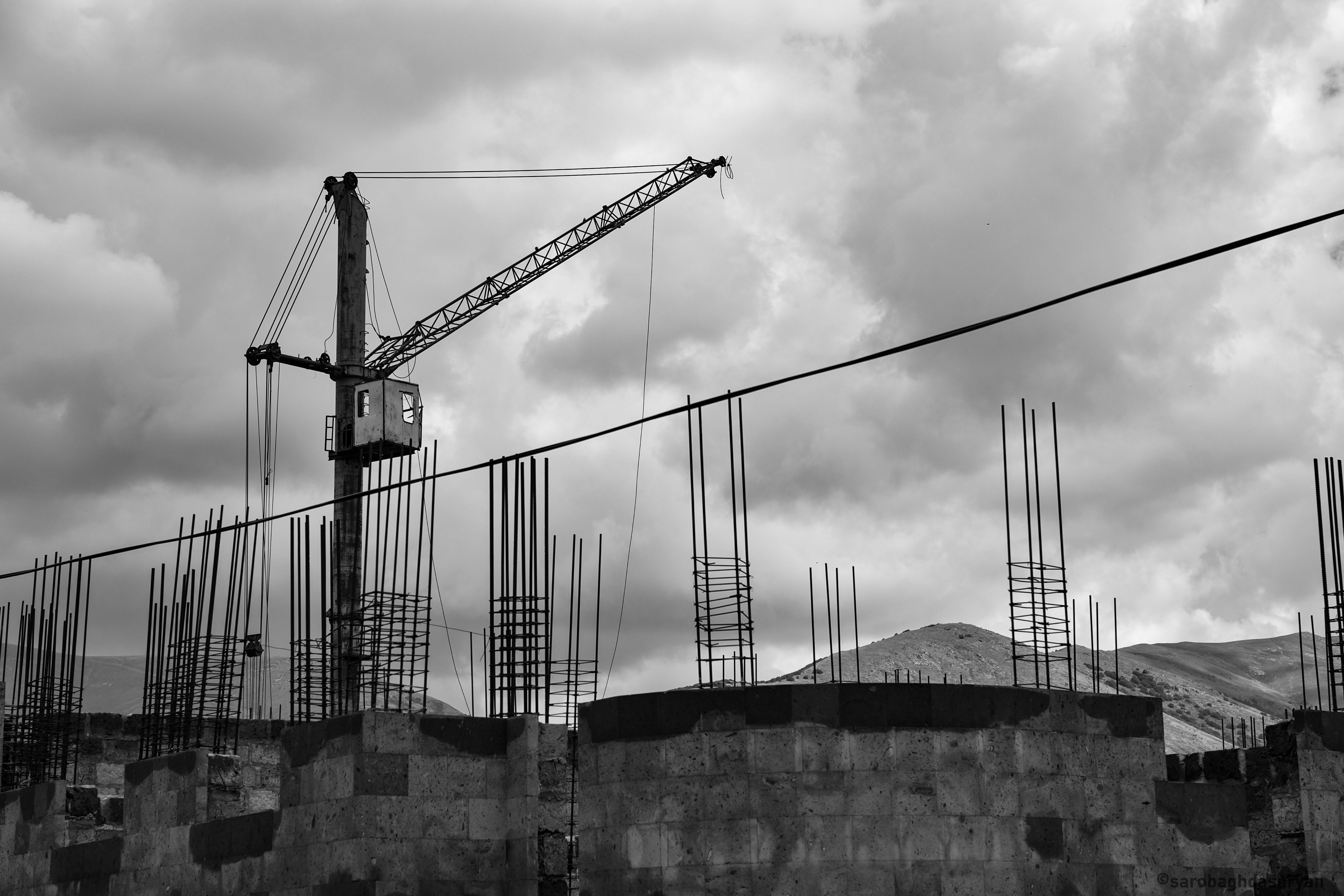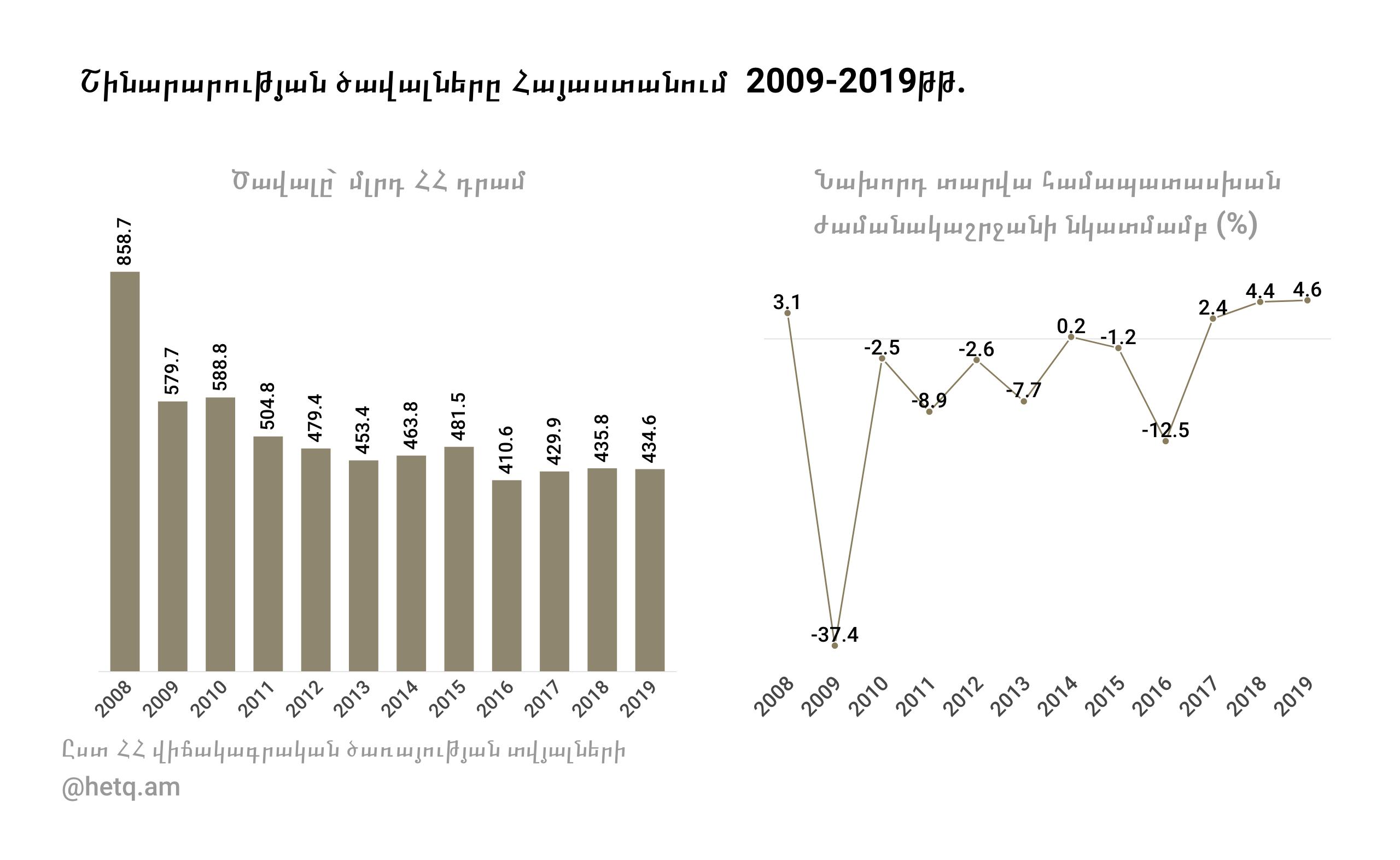
Armenia: Construction Growth Rate Up 4.6%
Armenia experienced a 4.6% growth in construction in 2019, totaling some AMD 435 billion ($908m).
Some economists interpret 2019 as a year of stabilization. Some see this growth rate as slow. Others see risks of a "construction bubble". Regardless, construction in Armenia is expected to intensify this year.
According to the National Statistical Service (NSS), construction in Armenia totaled 435 billion drams in 2019, growing by 4.6% compared to 2018. This includes both government financed, private construction and other means.
The construction sector in Armenia has been declining for the last ten years. Only since 2017 have there been positive trends. Since the sharp decline in 2009, this sector has not yet recovered to its former level. Before that, construction volumes were growing rapidly. Under the auspices of former Prime Minister Tigran Sargsyan, this growth was called the "construction balloon" - an artificially created growth that "exploded" during the global economic crisis. The authorities of those years, however, did not accept that there was unhealthy growth in the field. Construction started to inch up last year.
NSS data shows that construction in 2019 increased due to spending from both the government and private sectors.
42% of total construction in 2019 was private company financed. 29.5% was national government financed, 25.2% was financed by individuals, and the remainder was either community financed or due to humanitarian aid.
Company construction numbers include the construction of new apartment buildings. The income tax return mortgage program has significantly stimulated housing growth in recent years.
Economists view the growth in construction in Armenia and the general situation from different perspectives.
According to former Minister of the Economy Artzvik Minasyan, last year's construction growth rate does not correspond to the overall economic process. Economic growth in 2019 was 7.6%. According to Minasyan, in addition to housing construction, industrial construction is also important since it creates a continuous basis for economic growth.
“But today, we do not have corresponding growth in this field. Construction has intensified due to road and housing construction. We must be able to set the right direction for development in the field of construction,” Minasyan said in response to a question posed by Hetq at a recent economic discussion.
He also emphasized that today's housing construction is significantly promoted by the mortgage tax return program and noted that the program was started under the former government.
Babken Tunyan, Chairman of the National Assembly’s Standing Committee on Economic Affairs, remembers when the program was launched and by whom. "I mince no words when it comes to speaking about what was done under the past government said Tunyan.
According to Tunyan, 2019 was a year of renewal in the field of construction.
“Currently active construction is underway, which is also seen with the naked eye. The high growth rate in January (7.7% - author), I am sure, will remain. It is already difficult to find affordable housing in our new buildings. That is, there is a demand for construction. The problem should not only be the end-use construction itself, but also the demand and supply. We have a problem of depreciation of the housing stock, the problem of seismic resistance. The growth of mortgage lending is a healthy thing,” says Tunyan.
Former Armenia Central Bank Chairman Bagrat Asatryan believes that construction growth rate should exceed that for economic growth.
"We are facing very serious problems. In those years, when we were told that a construction balloon had been created, we had no normal construction. There are about 800-900,000 families in Armenia. About 15,000 new families are formed each year, and about 5,000 experience divorce. The demand for new housing should be based on this,” Asatryan says.
Despite the 7.7% growth in construction volumes this January, Asatryan pays attention to the absolute value of construction volumes, not the growth rate.
“Only 12 billion drams of construction occurred in January. That's a ridiculously low number.”
Another group of economists considers the current pace of housing construction to be dangerous, fearing it could lead to a "construction bubble". Artzvik Minasyan opposes the term "construction bubble" in general. He believes that construction is not an end in itself, but that it has a positive effect on other sectors of the economy.
“I am against the term construction bubble because construction creates systems. Those who say that construction is not export-oriented do not mean that it does not create jobs, it does not create added value. Our economy began to decline in previous years because there was no substitute for construction,” says Minasyan.
He expects construction to intensify this year. “Many permits have already been announced. The question is, to what extent does this construction fit the economy?”
Experts also expect construction volumes to rise this year against the backdrop of promises by the authorities to increase capital spending.
 Videos
Videos Photos
Photos

Write a comment